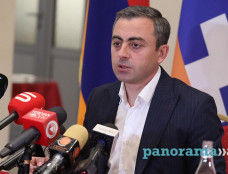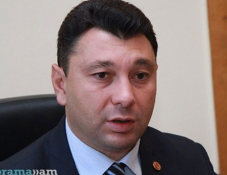
New AI tool can accurately spot cancer, study claims
Doctors, scientists and researchers have built an artificial intelligence model that can accurately identify cancer in a development they say could speed up diagnosis of the disease and fast-track patients to treatment, the Guardian reports.
Cancer is a leading cause of death worldwide. It results in about 10 million deaths annually, or nearly one in six deaths, according to the World Health Organization. In many cases, however, the disease can be cured if detected early and treated swiftly.
The AI tool designed by experts at the Royal Marsden NHS foundation trust, the Institute of Cancer Research, London, and Imperial College London can identify whether abnormal growths found on CT scans are cancerous.
The algorithm performs more efficiently and effectively than current methods, according to a study. The findings have been published in the Lancet’s eBioMedicine journal.
“In the future, we hope it will improve early detection and potentially make cancer treatment more successful by highlighting high-risk patients and fast-tracking them to earlier intervention,” said Dr Benjamin Hunter, a clinical oncology registrar at the Royal Marsden and a clinical research fellow at Imperial.
The team used CT scans of about 500 patients with large lung nodules to develop an AI algorithm using radiomics. The technique can extract vital information from medical images not easily spotted by the human eye.
The AI model was then tested to determine if it could accurately identify cancerous nodules.
The study used a measure called area under the curve (AUC) to see how effective the model was at predicting cancer. An AUC of 1 indicates a perfect model, while 0.5 would be expected if the model was randomly guessing.
The results showed the AI model could identify each nodule’s risk of cancer with an AUC of 0.87. The performance improved on the Brock score, a test currently used in clinic, which scored 0.67. The model also performed comparably with the Herder score – another test – which had an AUC of 0.83.
“According to these initial results, our model appears to identify cancerous large lung nodules accurately,” Hunter said. “Next, we plan to test the technology on patients with large lung nodules in clinic to see if it can accurately predict their risk of lung cancer.”
The AI model may also help doctors make quicker decisions about patients with abnormal growths that are currently deemed medium-risk.
When combined with Herder, the AI model was able to identify high-risk patients in this group. It would have suggested early intervention for 18 out of 22 (82%) of the nodules that went on to be confirmed as cancerous, according to the study.
The team stressed that the Libra study – backed by the Royal Marsden Cancer Charity, the National Institute for Health and Care Research, RM Partners and Cancer Research UK – was still at an early stage. More testing will be required before the model can be introduced in healthcare systems.
But its potential benefits were clear, they said. Researchers hope the AI tool will eventually be able to speed up the detection of cancer by helping to fast-track patients to treatment, and by streamlining the analysis of CT scans.
Newsfeed
Videos






























